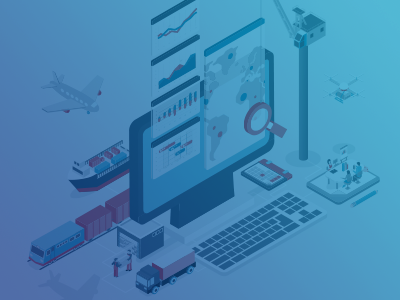
“Que sera, sera. Whatever will be, will be. The future's not ours to see. Que sera, sera.” You might recognize the lyrics from one of the most popular film songs ever – or not. The point is, when it comes to supply chain, the whatever-will-be-will-be attitude could land companies in a whole lot of trouble. Even though we can’t predict the future, we can’t afford to sit back and wait to see what happens. It is possible today to get some insights into top trends influencing supply chain and how companies can prepare for what’s coming.
Recently, Kinaxis partnered with Supply & Demand Chain Executive to host a great webinar – Top trends driving the future of supply chain and what leaders can do now to be ready.
In the webinar, Polly Mitchell-Guthrie, VP Industry Outreach and Thought Leadership, Kinaxis, shares learnings gathered from supply chain leaders, market analysts, academics and practitioners on what supply chain looks like today and where it’s headed in 2022 and beyond.
Using real-world case studies and the latest research, Polly explores these five trends driving the future of supply chain.
- Supply chain is top of mind for CEOs around the world. Now is the time to showcase the competitive advantage supply chains bring so companies can increase investment needed to deliver those advantageous results. However, to operate at the board level, supply chains need to be ready and able to connect their value to the wider enterprise – sales, marketing, operations, finance.
- The role of AI and humans is on the increase. The opportunity for AI is to augment human intelligence with as much automation as possible so planners can apply that expertise to the most pressing and complex problems that cannot be predicted or automated.
- Disruption effects are combinatorial and cascading. Supply chain is no stranger to disruption – extreme weather events, political unrest, world health crises, acts of nature, regulatory changes – and the list goes on. Disruptions are going to continue well into next year. Multi-enterprise collaboration and tighter integration will be key for success.
- Agility enables shortened planning cycles. Planning cycles vary considerably by industry and even company, but whatever cadence a company had, it most likely shortened in recent times. Find out how Unilever was able to shorten their planning cycle from 13 weeks to 4. Planning meetings went from weekly to daily.
- Sustainability is a business imperative. Supply chains account for more than 80% of greenhouse gas emissions. The only way to reach the Intergovernmental Panel on Climate Change’s target is by embedding sustainability into every link of the chain. We cannot treat sustainability as a separate work stream. Supply chain planning decisions should include scenarios to weigh tradeoffs between cost, margin and emissions, and ensure that the impact of those decisions is across the entire network.
Dive into the full details on the trends and recommended actions by watching our webinar on demand. Thoughts on any other emerging supply chain trends? Let us know!





